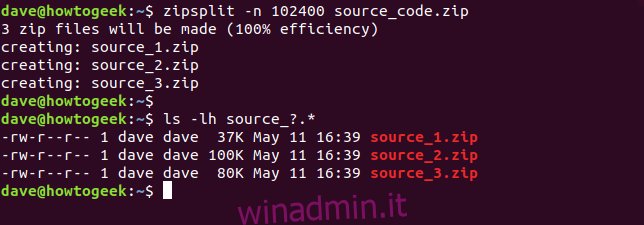

Hdiutil convert Disk_ -format UDRO -o Disk Image.dmg You only need to give hdiutil the name of the first segment, and as long as the other segments are in the same directory, it will find them.

You can most easily do this by converting the disk image to a standard UDIF read-only image (UDRO) with the following command. The solution is to drop into Terminal and use hdiutil to join the segments together again.

ZIPSPLIT WINDOWS CODE
Failed to attach the disk image, error code 109" Support for segmented disk images has been deprecated under macOS Monterey – double-clicking on a segmented disk image results in an error dialog popping up saying " The disk image couldn't be opened. If you want it on an USB stick or a DVD-R, you can then do that using Disk Utility or any of your favorite DVD burner apps. Disk Utility will "assemble" the whole partition and mount it. You have to do this under OSX: put all files in the same folder (e.g. Those are split Disk Utility disk images. 001.dmg) are NOT file parts and should not be joined together using commands such as "copy /B" under Windows or "cat" under Linux. dmg.001)įiles that do not exactly end with. If dragging and dropping files onto the app icon doesn't work, rebuild the desktop once before using this app so that the Finder knows that this app accepts all file types.
ZIPSPLIT WINDOWS ZIP
003, etc ZIP part files all at once then drag and drop the files selection onto the ChunkJoiner app icon and save the recombined output a file name. What this does is to combine (cat) all the files into a single file named 691-5088-A.zip which you can then expand normally. Once you're under that folder, adapt the following command (here based on the part files listed in example above) to your situation: Open a Terminal window and navigate to the folder containing all the ZIP part files. What this does is to create a combined file (copy) from all the ZIP parts and save it as 691-5088-A.zip which you can then expand normally. a DMG, then it should end with ".dmg", not ".zip". NOTE: Remember that ".zip" is only an example here. Open a command prompt and navigate to the folder containing all the ZIP part files. MyDiskImage.dmg.001 + MyDiskImage.dmg.002 will result in: MyDiskImage.dmg Under Windows You can think of "ZIP" here in this article as "A FILE". It doesn't matter if it's a ZIP or DMG or any kind of file, that is irrelevant.
ZIPSPLIT WINDOWS ZIP FILE
NOTE: this article will refer to a ZIP file but it obviously works on ANY type of file. A split ZIP file could look like this, for instance: 002, etc.), before you can use the file, you first need to join the split files together into a single, whole file. When you come across split files that end with sequential numbers (e.g.001. 001.dmg) then you need to jump to the split Disk Utility disk image section. If you’d like to change the location where the files will be extracted, click “Browse,” and then navigate to the desired drive or folder.Before you read any further: If your file does NOT EXACTLY END WITH. In the “Extract Compressed (Zipped) Folders” window that appears, you’ll see the current file path as the default location for the unzipped files. Next, right-click the file and select “Extract All” in the menu. First, locate the ZIP file that you’d like to extract in File Explorer.
ZIPSPLIT WINDOWS HOW TO
RELATED: Everything You Need to Know About Zip Files How to Extract a Zip File in Windows 11Įxtracting (unzipping) ZIP files in Windows 11 is just as easy as zipping them.

Now that you have a ZIP file, you can copy it or share it like any other kind of file. When you’re ready, press Enter.Īnd that’s all there is to it! Pretty simple. Type a new file name or leave the default name in place. The ZIP file name will highlight, allowing you to type in whatever name you’d like. After a moment, your ZIP file will appear in the same folder as the source files that you just compressed.


 0 kommentar(er)
0 kommentar(er)
